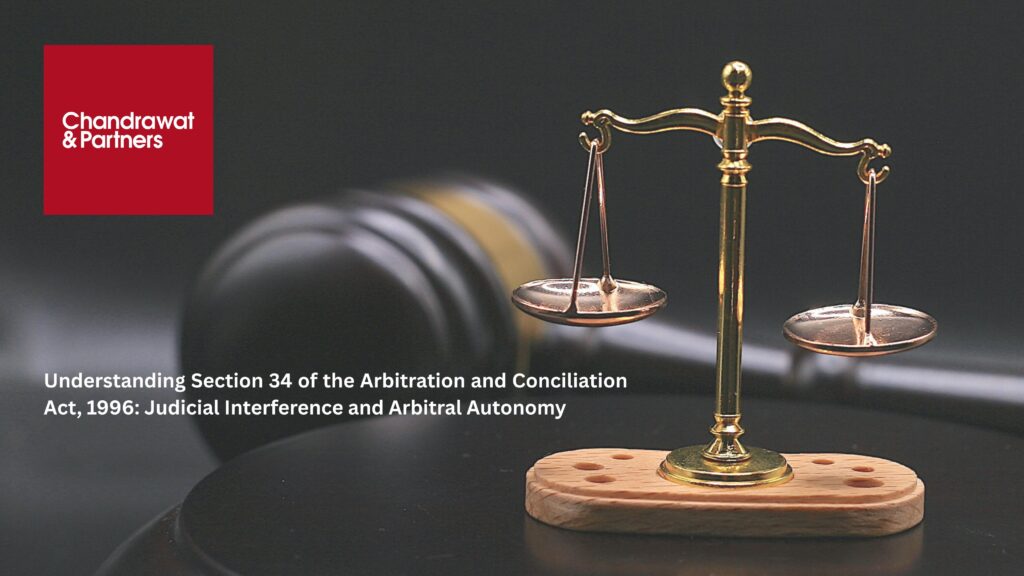Home > Recent Judgements > Understanding Section 34 of the Arbitration and Conciliation Act, 1996: Judicial Interference and Arbitral Autonomy
April 30, 2025
Understanding Section 34 of the Arbitration and Conciliation Act, 1996: Judicial Interference and Arbitral Autonomy
The Arbitration and Conciliation Act, 1996, was enacted to provide an alternative dispute resolution mechanism that is efficient, cost-effective, and less time-consuming compared to traditional litigation. Section 34 of the Act delineates the grounds on which a party can challenge an arbitral award before a court. Over time, judicial interpretations have emphasized the principle of minimal judicial interference, underscoring the autonomy of arbitral tribunals.
Scope of Judicial Interference Under Section 34
Section 34(2) of the Act permits a court to set aside an arbitral award if it finds that:
- The award was induced or affected by fraud or corruption;
- The tribunal was not constituted in accordance with the agreement of the parties;
- The award deals with a dispute not contemplated by or not falling within the terms of the submission to arbitration;
- The award is in conflict with the public policy of India.
However, post 2015 amendment to the Act, the grounds for challenging an award on the basis of public policy have been narrowed. The Supreme Court in Associate Builders v. Delhi Development Authority (2015) 3 SCC 49 emphasized that courts should not interfere with an arbitral award merely because they disagree with the interpretation of the agreement by the arbitrator. Interference is warranted only if the award is perverse or based on no evidence.
Judicial Autonomy and Minimal Interference
The principle of minimal judicial interference is rooted in the recognition that arbitration is a consensual process where parties opt for a neutral third party to resolve their disputes. The Supreme Court in Enercon (India) Ltd. v. Enercon GmbH (2014) 5 SCC 1 highlighted that the role of courts is supervisory, not appellate. Courts should not re-evaluate the evidence or reconsider the merits of the dispute.
In M/s. Ssangyong Engineering & Construction Co. Ltd. v. National Highways Authority of India (2019) 15 SCC 131, the Court reiterated that judicial intervention is permissible only on limited grounds, such as when the award contravenes the fundamental policy of Indian law or conflicts with the most basic notions of morality or justice.
Patent Illegality and Its Implications
Section 34(2)(b)(ii) introduces the concept of “patent illegality,” allowing a court to set aside an award if it finds that the award conflicts with the fundamental policy of Indian law. However, the Supreme Court in Oil & Natural Gas Corporation Ltd. v. Saw Pipes Ltd. (2003) 5 SCC 705 clarified that illegality must be apparent on the face of the award and not a result of mere legal errors. Minor errors or misinterpretations do not constitute patent illegality.
Conclusion
Section 34 of the Arbitration and Conciliation Act, 1996, provides a framework for challenging arbitral awards. However, the emphasis on minimal judicial interference underscores the importance of respecting the autonomy of arbitral tribunals. Parties opting for arbitration must understand that the process is designed to be final and binding, with limited avenues for judicial recourse. This approach aims to uphold the integrity and efficiency of the arbitration process, ensuring that it remains a viable alternative to traditional litigation.
For more information or queries, please email us at
enquiries@chandrawatpartners.com





